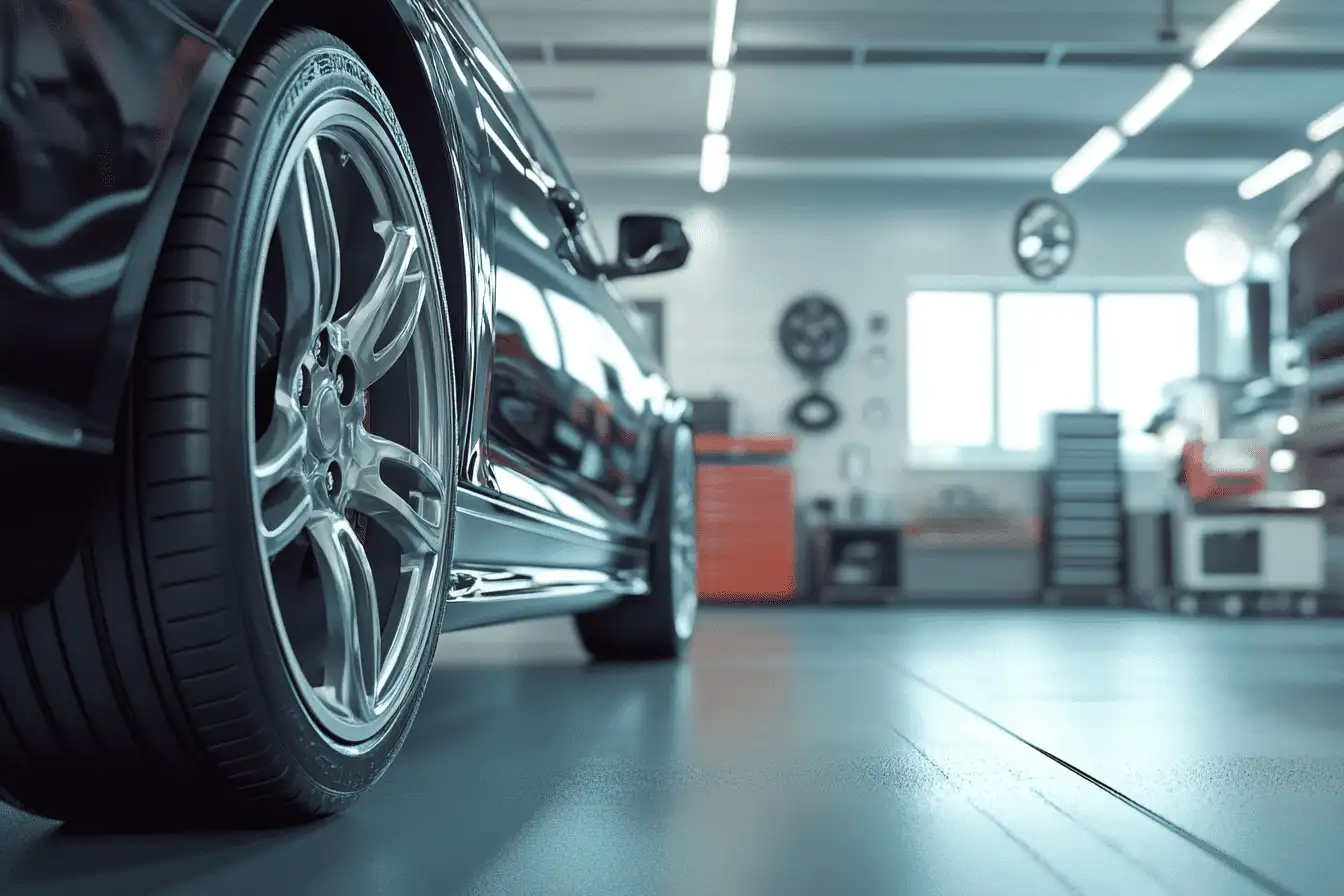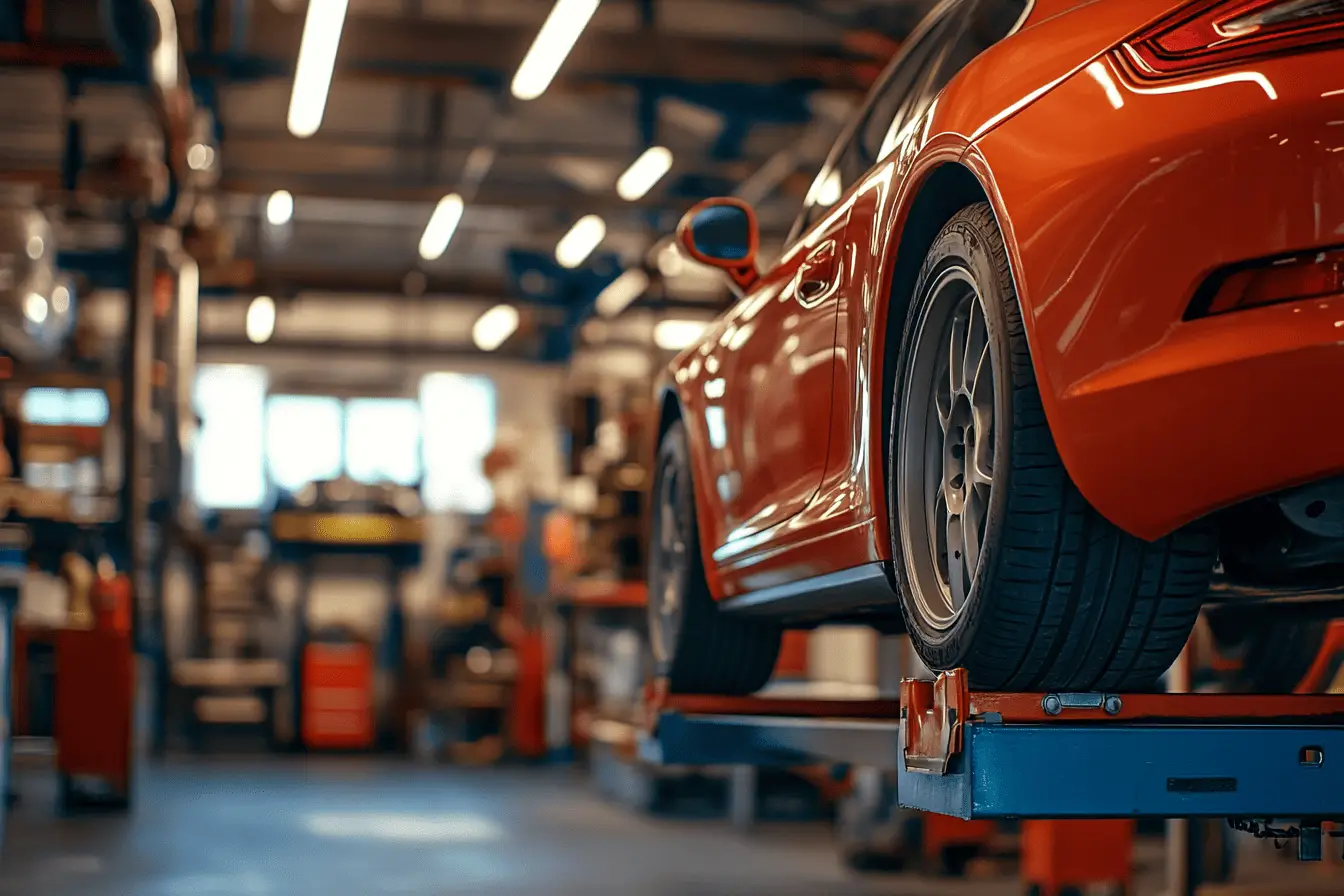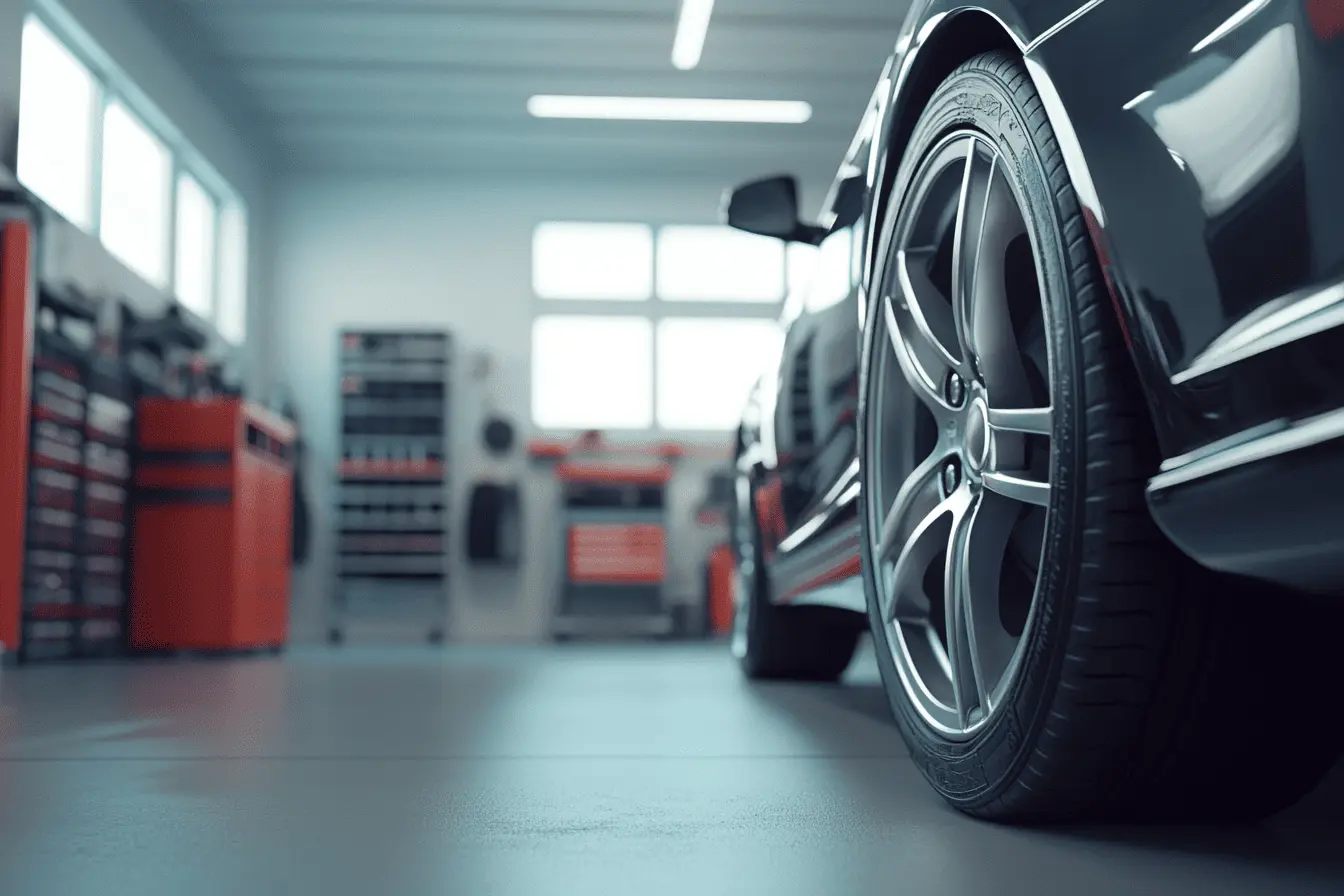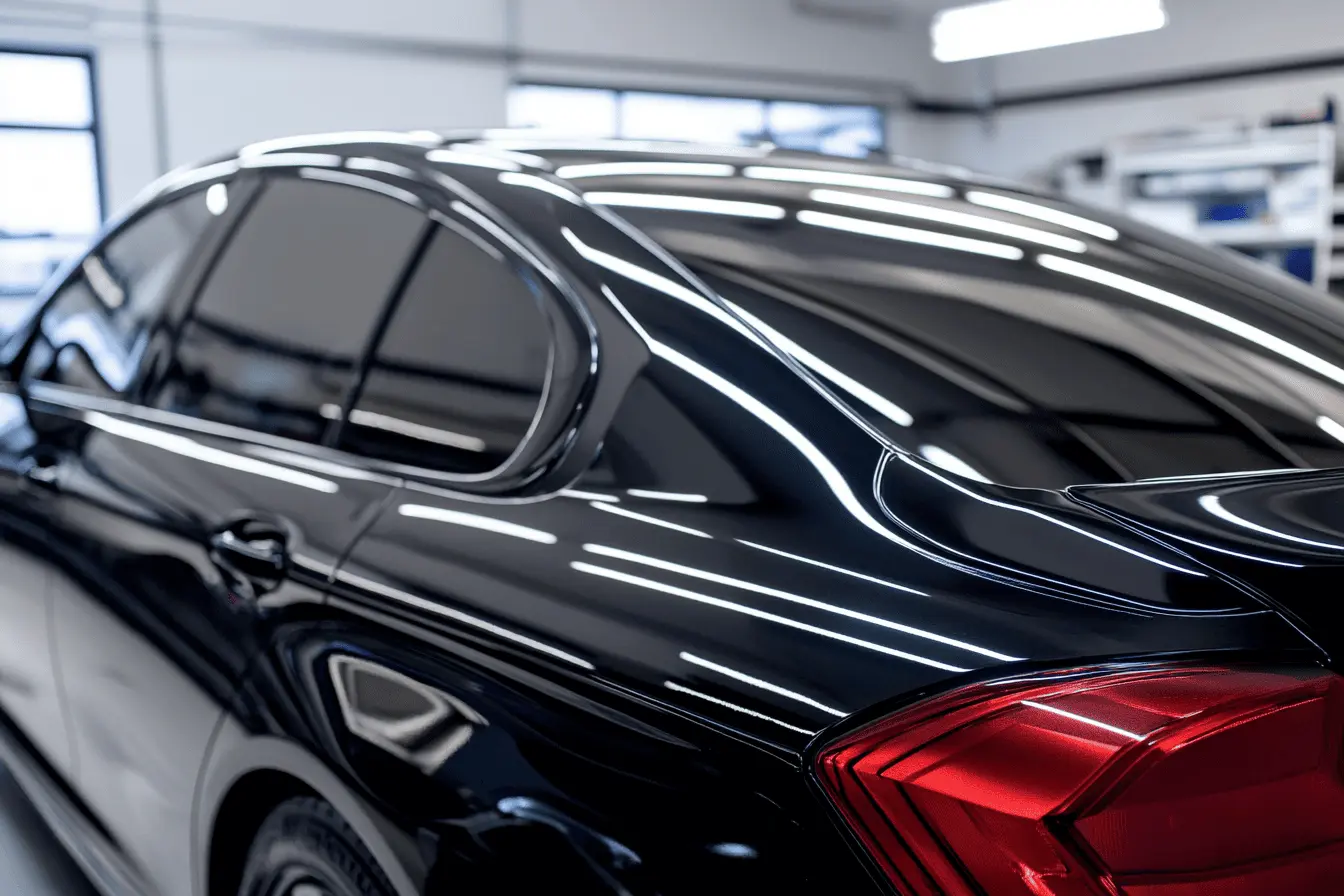
Find out here how much Ford Focus clutch replacement costs in the UK. What are common symptoms and what causes a clutch to slip or go bad? When do I need to replace the clutch? Plus: Where to get free estimates and how to save money.
How much does Ford Focus clutch replacement cost in the UK?
The average cost for clutch replacement on a Ford Focus ranges between £650 – £1,100 in the UK. The cost of materials for the clutch kit usually ranges from £250 – £550 and the clutch kit consists of clutch driver plate, clutch pressure plate and clutch release bearing.
ON AVERAGE: £650 – £1,100
To this should be added the cost of hydraulic fluid, oil and small parts for about £20 – £100. Additional costs may arise from subsequent damage to adjacent parts. However, the car mechanic can only reliably diagnose these when the car is dismantled. It can also be useful to replace flywheel and clutch together (+ additional £250 – £400) in order to save labour costs.
The major part of costs during clutch replacement is caused by the amount of work involved. Workshops normally charge between £100 – £150 per hour. For a Ford Focus, changing the clutch takes 4 – 6 hours on average. This results in a wage of £400 – £900. All figures shown on this article are incl. VAT and for guideline values only and may of course vary.
Example: Ford Focus clutch replacement cost (1.5l, 2011) | |
|---|---|
Overview | Cost |
Clutch kit | £400 |
Oil, liquids, small parts | £40 |
Labour cost, 4 hours | £440 |
Total cost | £880 |
GET FREE INSTANT QUOTES FROM GARAGES IN YOUR AREA
How does a clutch work?
The Ford Focus either has a five-speed transmission or six-speed transmission. Depending on the speed, the appropriate gear is engaged. In order for the gearshift to work, the driver needs a clutch. Put simply, a clutch consists of two discs. One disc is attached to the transmission shaft, the other to the engine flywheel.
When activated, both discs press against each other with strong pressure. This allows the engine’s power to reach the wheels via the gearbox. When the clutch pedal is then pressed, the two discs are separated by a hydraulic system, and a new gear can now be engaged in the transmission. Clutching to a pedal ensures a pleasant and slow start by slowly bringing the two discs together and transmitting only part of the power.
5 signs and symptoms of a faulty clutch on your Ford Focus
A clutch is a wearing part that usually does not stop working overnight. There are always signs of damage and wear on the clutch, which can be perceived as warning signals. For this reason you should be particularly attentive to some signals and in such cases have your clutch checked by a specialist or a specialist garage.
You can tell whether your Ford Focus’ clutch is defective by the following 5 signs:
5. Noise when the clutch is engaged or disengaged
Mechanical noises and rough gear changes are signs that the clutch no longer separates properly.
For your own safety and to avoid subsequent damage, it is absolutely necessary to go to the garage in the event of these signs (especially in the case of a slipping clutch). But in order to get final clarity, the cause of the defect can also be checked by yourself. Testing the clutch can provide clarity within a short time.
What causes a clutch to go bad?
» Clutch pedal not fully pressed
» Dwell on the clutch during short stops instead of putting the gear in neutral
» Permanent pressing while driving
» Allow unnecessary grinding during gear changes
» Unnecessary cargo and therefore weight on board
» Get into the next gear when shifting
» Shift down over two gears
How long does a Ford Focus’ clutch last?
» On average: 100,000 – 180,000 km
A Ford Focus’ clutch does not have any fixed interval in which it must be changed, as is the case with a toothed belt, for example. It is regarded as a wearing part whose replacement interval depends heavily on the driver’s operation. The driver’s own driving style therefore has a major influence on the period of time at which the clutch needs to be replaced.
If the pedal is held at the so-called grinding point for a long time during shifting, a particularly large amount of abrasion can occur. As a result, the clutch slips after a certain amount of time, as the power of the engine can no longer be transmitted even when the clutch is in the rest position. As a rule, the clutch components are robust and have a long service life.
However, poor driving can mean that the wear on the clutch is so severe that it has to be replaced after only about 60,000 km (about 37,000 miles). On the other hand, with a gentle driving style, intervals of over 180,000 km (about 112,000 miles) can be achieved. More about this in the next section.
Slipping clutch: Meaning, symptoms and causes
What does a slippling clutch mean? And how do I know if my clutch is slipping?
Many car owners ask themselves this when the vehicle shifts exceptionally badly. If the clutch no longer grips properly, but lets most of the movement of the individual parts slip, it no longer transmits the power of the engine properly. This symptom is one of the clearest signs that there is a defect in the clutch system. This is referred to as a slipping clutch.
Especially on the motorway this can have devastating consequences. When driving and accelerating up to full speed a clutch does not grip properly anymore. The newly engaged gear cannot perform its duty.
Especially during overtaking manoeuvres this can lead to shock moments and become a danger. If this weak power transmission occurs, however, slipping of the clutch may have been noticeable as soon as the car starts up.
What causes a clutch to slip?
A frequent cause of slippage is the weak contact pressure between the friction lining of the clutch disc and the friction surfaces. The lower this pressure is, the more the clutch slips. However, the problem of slipping clutches is manifold. It can happen that the clutch of a vehicle slips – but only at high speeds.
Other drivers complain that their clutch slips when the engine is cold, when starting off or in first gear. Another says that his clutch slips after a chip tuning. The causes are as varied as the symptoms. If the clutch slips, there can be various reasons.
Apart from the pressure plate and the clutch disc, the release system is often the cause. Other causes can be an incorrectly reworked flywheel or the installation of an incorrect clutch.
The car brand Ford
Ford is one of the five largest car manufacturers in the world. The company with US roots not only revolutionised the vehicle industry with its numerous types and models, but also set completely new standards in the industry with the pioneering development of the moving assembly line.
Models such as the Focus and the Fiesta have become indispensable on UK roads and used cars regularly achieve a high price, which speaks for the extraordinary quality of the vehicles.
Also of note is the ground-breaking EcoBoost engine technology, which consistently scores extremely well in numerous tests. The smallest representative, the 1.0-litre EcoBoost petrol engine, has even been officially awarded ‘International Engine of the Year’ several times.
Popular Ford car models in the UK
In 2020 Ford was the UK’s best-selling car brand with 152,777 sold vehicles. The most popular Ford models in the UK include the Fiesta, Focus, Mondeo, Puma and Kuga. However, the Focus and the Fiesta have been the most popular Ford models in the last decade.
The Ford Focus
The Ford Focus is considered a family-friendly car with excellent value for money. It scores with lots of space, good and precise handling, lots of comfort and modern technology. In addition, the Ford Focus is very reliable and durable. For these reasons, the Focus is very popular on both the new car and the used car markets.
The compact class car Ford Focus has been built since 1998. In 2000 and 2001 the Ford Focus was the world’s best-selling car and in the past decade one of the best-selling cars in the UK. In 2004, the second generation of the model was launched, which then was replaced by the third generation in 2011. In 2018, the fourth generation of the Ford Focus was launched.
The fourth generation has been extensively upgraded technologically. Adaptive Cruise Control and Traffic Jam Assist make driving easier, as do camera-based cornering lights and other state-of-the-art assistance systems. The new Focus is also the first Ford with a head-up display and mobile wifi. The model range includes the five-door hatchback limousine, an estate version Turnier and a four-door notchback limousine.










